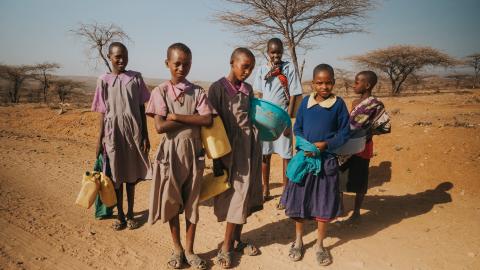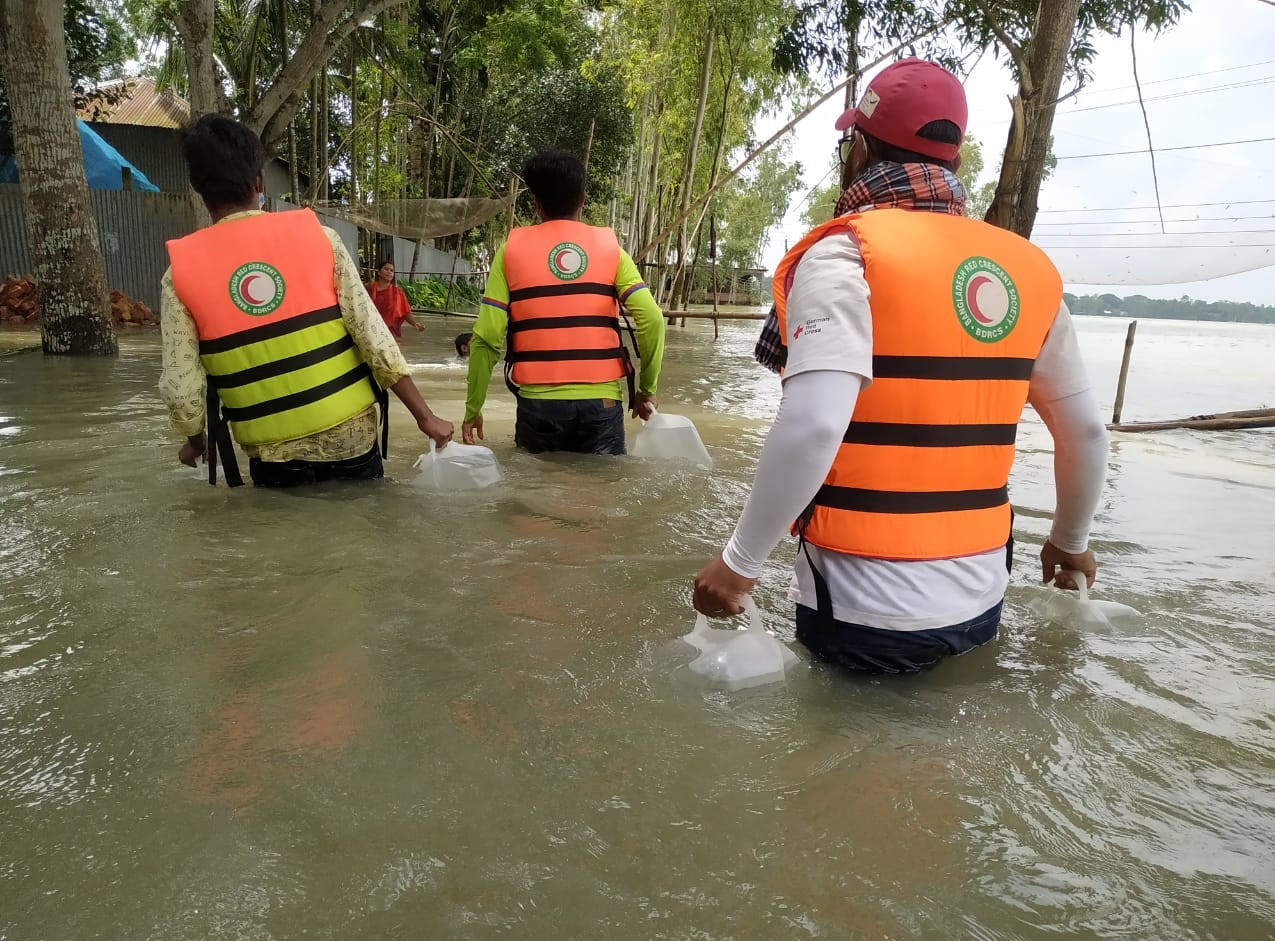Carbon Offsets: A New Year’s Resolution for Every Humanitarian

For many of us, identifying and planning better habits extend well beyond they first few days in the new year. In fact, it is probably more effective to let the frenzied ‘new year new me’ rhetoric and forced phase pass, then calmly and conscientiously set our goals and intentions. As we roll on into 2020, here is one new year’s resolution we can all get behind, one that helps our planet earth.
We’ve seen the bushfires raging in Australia, the unusually warm winters, the increased frequency and intensity of natural hazards. As climate change and other environment issues continue to feature high on the global agenda, let’s resolve to account for our share in global warming by buying carbon offsets for all our flights this year and going forward.
We all love to travel, and yes air travel is critical to much of what we do as humanitarians, activists and social change leaders, but it is bad for the environment. According to the International Air Transport Association (IATA), flights account for 2.4 percent of the world’s carbon dioxide emissions which may seem small at first glance but is significant when we contemplate that air travel is projected to double over the next 20 years. As good global citizens, we all want to do our part to protect our planet and fight climate change, so what can we do as we plan our travels in our professional and personal capacities? The GDPC did some investigation on purchasing carbon offsets for flights, or for any activity, that leaves a carbon smudge. Here are some key questions answered:
1. What is a “Carbon Footprint”?
When you use energy or products manufactured with fossil fuels, you generate carbon dioxide CO2 other greenhouse gas emissions that contribute to climate change or global warming. This combination of emissions caused by your home, transportation, and daily life is known as your “carbon footprint.” There are many ways to reduce your carbon footprint, view green tips here. Flying however, is considered among the most harmful of activities for the environment. The average annual amount of CO2. generated by a single person in the EU is 8.4 Metric tonnes. That’s for an entire year. In comparison a single long-haul flight could generate 1.8 metric tonnes of CO2.
2. What are carbon offsets, and how do they work?
Carbon offsets offer a way to counter your pollution by investing in projects that reduce emissions of carbon dioxide or other greenhouse gases (GHG) in the atmosphere. Let us say you’re flying from Miami to London, you can purchase a carbon offset to account for the environmental impact of that flight. Carbon offset projects range from developing renewable energy, capturing methane from landfills or livestock to planting trees or even improved forest management, where trees may be allowed to grow longer to increase the amount of carbon neutralized in the environment.

3. Why should travelers buy carbon offsets?
Anyone can and should consider buying carbon offsets, but because travel is particularly toxic to the environment, you may feel more motivated to account for your participation in the pollution. Buying a carbon offset is an easy and relatively affordable way to negate your impact. The good news is, even if you have already purchased your flight, you can buy your carbon offset now, after you have returned from your trip or anytime you wish.
4. How do I buy carbon offsets?
Though a new industry, buying a carbon offset is easy with several choices of programs. Some airlines give you the option to buy them through their sustainability programs. There are also sites such as Cool Effect, Native Energy, Green-e and Gold Standard that also offer offsets. To get more mileage for your green investment, consider a project that serves a dual purpose such as one that reduces greenhouse gas emissions but also has a humanitarian benefit. For example, by buying offsets from a Gold Standard certified project you are helping to bring clean water to communities in rural Ethiopia.
5. How much do carbon offsets cost?
To offset a round-trip flight between New York and London, a donation of $10 could be paid to a program in Latin America that provides stoves to replace wood burning or coal stoves which produce harmful smoke. Cool Effect© estimates that one new stove could reduce three metric tons of carbon emissions per year. Voluntary carbon offset prices can range anywhere from $0.10 to $44.80 per metric tonne, depending on the vendor and the projects you invest in. How many CO2 emissions does your flight generate? Here are some calculators to try: United Airlines, Jet Blue and Delta.
Alternatively, you may wish to consider a single offset purchase at the end of each quarter or year, based on the cumulative flights you’ve taken or to offset your full footprint to include household activities.
6. How can travelers determine which programs are credible?
When buying carbon offsets to compensate for your travel pollution, you want to ensure you find a reputable program that:
- Is transparent with clearly defined information on how the emission reduction works and how it’s accounted for.
- Is vetted by third-party group that actively monitors projects and ensure they’re providing a real reduction in carbon.
- Tags emission reductions so that each metric ton gets a unique serial number – without one, the same emissions reductions could get sold over and over. You also need to look for projects that are truly additional, meaning it wasn’t an already-existing effort now being advertised as a carbon offset.
- Has reserves to account for future reversals. (For example, if you’re paying to plant a tree and the tree dies, the program should have a plan to make up for the carbon deficit.)
The United Nations Framework Convention on Climate Change has a full list of UNFCCC certified projects that reduce, avoid or remove greenhouse gas emissions from the atmosphere. The projects are implemented in developing countries and are rewarded with Certified Emission Reductions (CERs), a type of carbon offset measured in tonnes of CO2 equivalent. The CERs are available for everyone to purchase to offset emissions or in support of the projects. The full contributions go directly to the projects.

7. Are carbon offsets tax-deductible?
Yes. If you’re supporting a project that’s registered as a 501(c) (3) nonprofit organization, you can make your purchase tax-deductible. That means you get to reduce your impact on the environment and maybe ease your tax burden at the same time.
8. What are other ways to be a green traveler than purchasing carbon offsets?
There are other ways you can reduce your carbon footprint from air travel, including choosing non-stop flights when possible, and avoiding first/business class since spacious seats take up more space accounting for a greater amount of fuel used per passenger. The most effective way to reduce your CO2 emissions is to reduce your fossil fuel consumption. This could also mean having a teleconference instead of traveling for a meeting. If you do travel, you can reduce your footprint by taking vacations closer to home, taking a bus, train or fuel-efficient vehicle instead of a short flight, or booking a flight on a more fuel-efficient aircraft.
While our high carbon footprint from air travel is an inconveient truth, we must not be deterred by it. Our humanitarian work is meaninful and critical, and without it we face even greater greater consequences of climate change and the resulting disasters and human suffering. Let’s adopt a new year’s resolution that helps our planet in 2020 and for years to come.
Happy green travels and a prosperous 2020!
~
Want to estimate your impact on the environment? Try this carbon footprint calculator today!
Sources:
https://www.nationalgeographic.com/science/2019/12/what-are-carbon-offsets/
https://thepointsguy.com/guide/everything-you-need-to-know-carbon-offsetting-flights/
https://www.washingtonpost.com/travel/tips/questions-about-carbon-offsets-flights-answered/
https://nativeenergy.com/our-approach/carbon-offsets/
https://offset.climateneutralnow.org/
Lessons Learned :
Supporting Materials :


